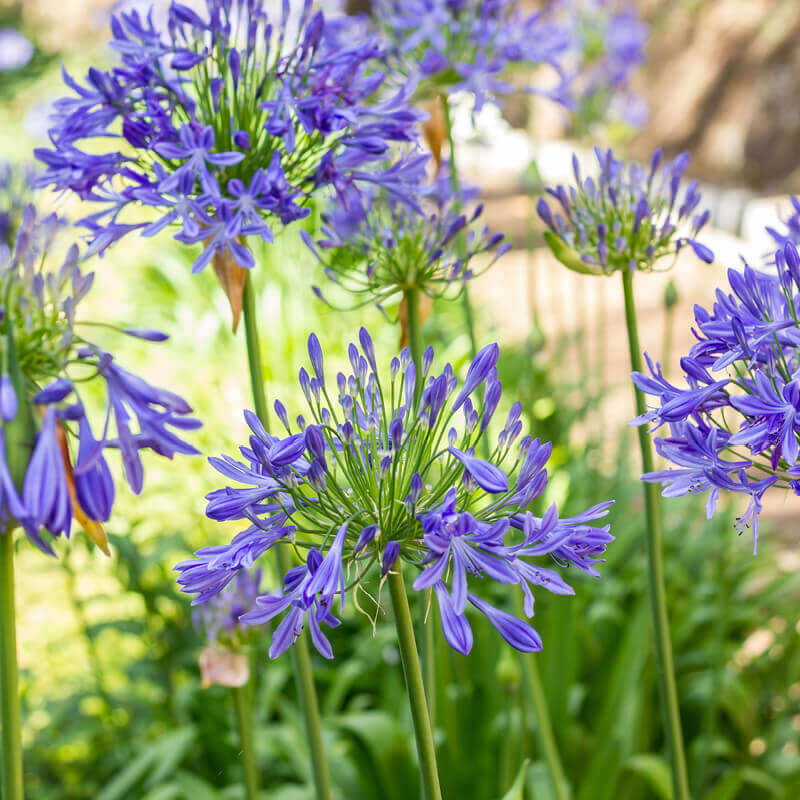Unleashing the Secret to Successful Agapanthus Growing: Tips and Tricks for a Flourishing Yard
In the world of gardening, growing agapanthus effectively requires a critical technique that encompasses numerous facets of plant treatment. With cautious interest to information, one can open the secrets to nurturing these magnificent flowers, leading to a garden that prospers with elegance and vibrancy. By understanding the nuances of agapanthus farming, one can create a setting where these plants flourish and grow abundantly. In the complying with discussion, we will check out crucial suggestions and methods that will assist you towards a growing agapanthus garden, using understandings into finest techniques, soil problems, watering strategies, and more.
Growing Agapanthus: Ideal Practices
When growing Agapanthus, proper soil preparation is necessary for making sure effective development and advancement of these attractive flowers. Agapanthus, typically referred to as Lily of the Nile or African lily, thrives in well-draining dirt with a somewhat acidic to neutral pH degree - Agapanthus. Prior to growing, it is critical to amend heavy clay soils with organic matter such as garden compost or peat moss to boost water drainage and supply essential nutrients for the plants
To plant Agapanthus, choose an area that obtains full sunlight to partial color, as this will promote healthy growth and abundant blooming. Dig a hole twice the diameter of the plant's root round and position the Agapanthus at the very same deepness it was formerly growing. Gently backfill the opening with soil, weighing down securely to get rid of any kind of air pockets around the origins.
Water the freshly grown Agapanthus extensively and remain to maintain the dirt equally wet, specifically throughout the plant's energetic expanding period. Agapanthus. Applying a balanced fertilizer once a month can further sustain the plant's development and flowering. By adhering to these ideal methods for planting Agapanthus, you can create a spectacular display of these captivating blossoms in your garden
Ideal Dirt Issues for Agapanthus
For optimum development and growing success of Agapanthus plants, ensuring the soil conditions are suitable is essential. Agapanthus prefers dirt that is rich in nutrients, so incorporating a balanced plant food throughout the expanding season can promote healthy and balanced development and dynamic flowers.

Watering and Feeding Tips
To make certain healthy growth and vivid blossoms, correct watering and fertilizing strategies are essential for effective Agapanthus growing. Agapanthus plants profit from regular watering, specifically throughout the expanding period.
When it pertains to fertilizing Agapanthus, a well balanced fertilizer with equivalent components nitrogen, phosphorus, and potassium can be used in the springtime to promote healthy and balanced development and flowering. Slow-release plant foods are top article perfect for offering nutrients slowly over a prolonged duration. Stay clear of over-fertilizing, as this can cause too much vegetation growth at the cost of blooms.
Furthermore, including raw material like garden compost right into the soil can enhance nutrient degrees and improve soil framework, aiding in the overall health of the Agapanthus plants. By following these watering and feeding tips, garden enthusiasts can guarantee their Agapanthus plants flourish and create spectacular display screens of flowers.
Trimming and Deadheading Techniques
Proper pruning and deadheading strategies play an important function in keeping the wellness and aesthetics of Agapanthus plants, complementing the necessary methods of watering and fertilizing for effective cultivation. Trimming Agapanthus involves removing invested blossom heads, dead pop over here or yellowing leaves, and overall shaping of the plant to promote far better growth. Deadheading, the process of getting rid of discolored flowers, not just boosts the plant's look yet additionally motivates additional flowering.
When deadheading Agapanthus, it is a good idea to clip off the flower stem at the base utilizing sharp, clean shears. This process reroutes the plant's energy from seed production back right into root and vegetation growth, promoting a healthier and a lot more robust plant. Regular deadheading can extend the growing period of Agapanthus and stop self-seeding, which can bring about overcrowding.
In terms of trimming, Agapanthus usually take advantage of a light trim after blossoming to clean the plant and motivate fresh development. Reducing the invested flower stems and removing any type of dead or broken foliage aids preserve the plant's vitality and general look. Nevertheless, it is vital to avoid cutting right into the crown of the plant, as this can damage its health and wellness.

Protecting Agapanthus From Vermins and Diseases
Implementing efficient pest and illness administration methods is critical to guarding the health and wellness and vitality of Agapanthus plants in cultivation. One typical pest that influences Agapanthus is the Agapanthus borer, a caterpillar that passages right into the plant, causing damage to the fallen leaves and blossoms.
In enhancement to insects, Agapanthus are prone to illness such as origin rot and fungal fallen leave areas. By remaining attentive and resolving parasite and condition concerns without delay, garden enthusiasts can aid their Agapanthus prosper and grow.

Final Thought
Finally, successful farming of agapanthus needs proper growing techniques, excellent soil problems, sufficient watering and feeding, regular trimming and deadheading, and protection from parasites and illness. By following these pointers and techniques, garden enthusiasts can make sure a flourishing yard full of lovely agapanthus blooms. Agapanthus. Bear in mind to maintain regular care and interest to information to promote the wellness and durability of these magnificent plants
When planting Agapanthus, correct soil prep work is essential browse around this site for making sure effective growth and growth of these gorgeous blossoms.Water the freshly grown Agapanthus thoroughly and continue to maintain the dirt evenly damp, specifically during the plant's energetic expanding season.For optimum development and growing success of Agapanthus plants, ensuring the soil conditions are excellent is essential. When growing or hair transplanting Agapanthus, guarantee the soil is well-prepared to give the necessary foundation for the plants to establish themselves effectively. One usual parasite that affects Agapanthus is the Agapanthus borer, a caterpillar that tunnels into the plant, triggering damages to the fallen leaves and blossoms.